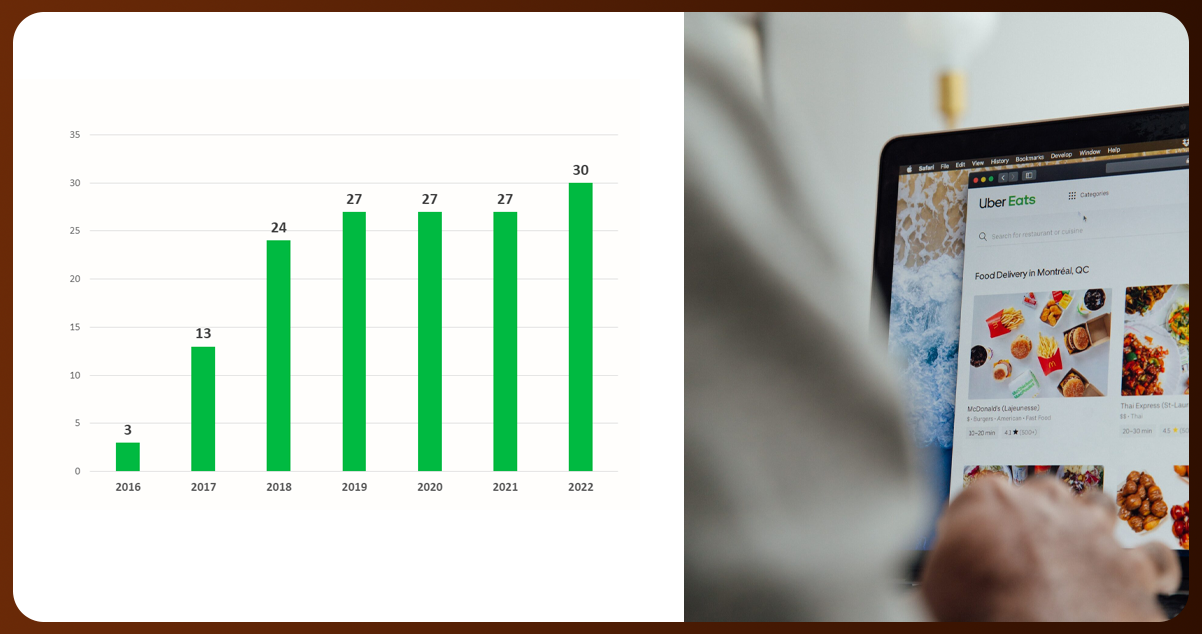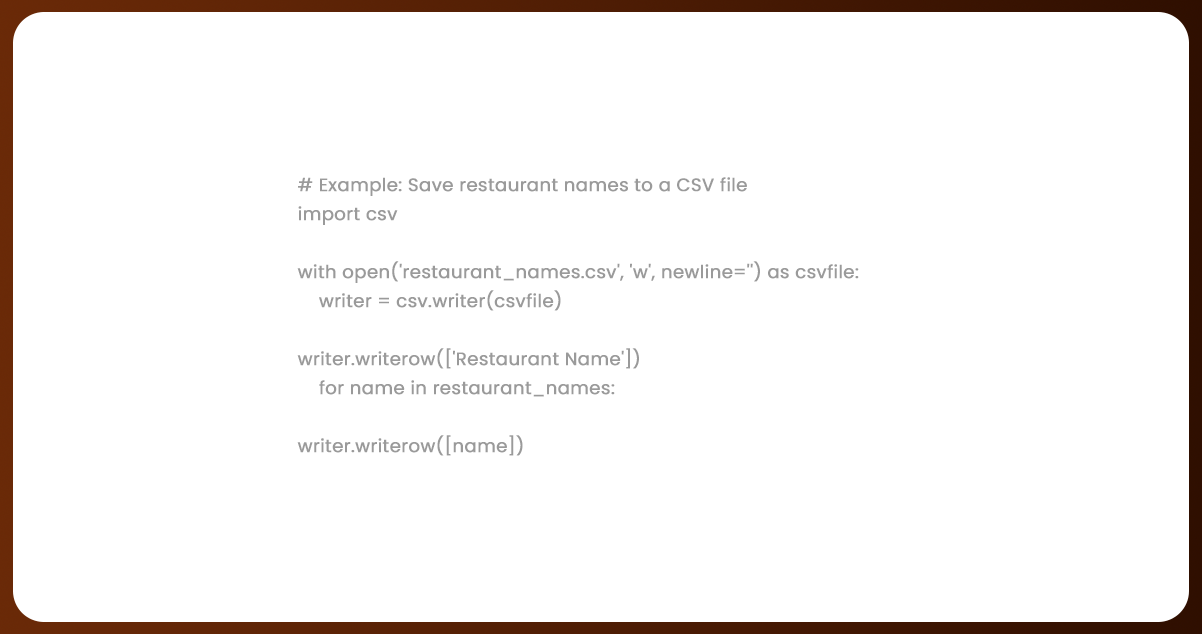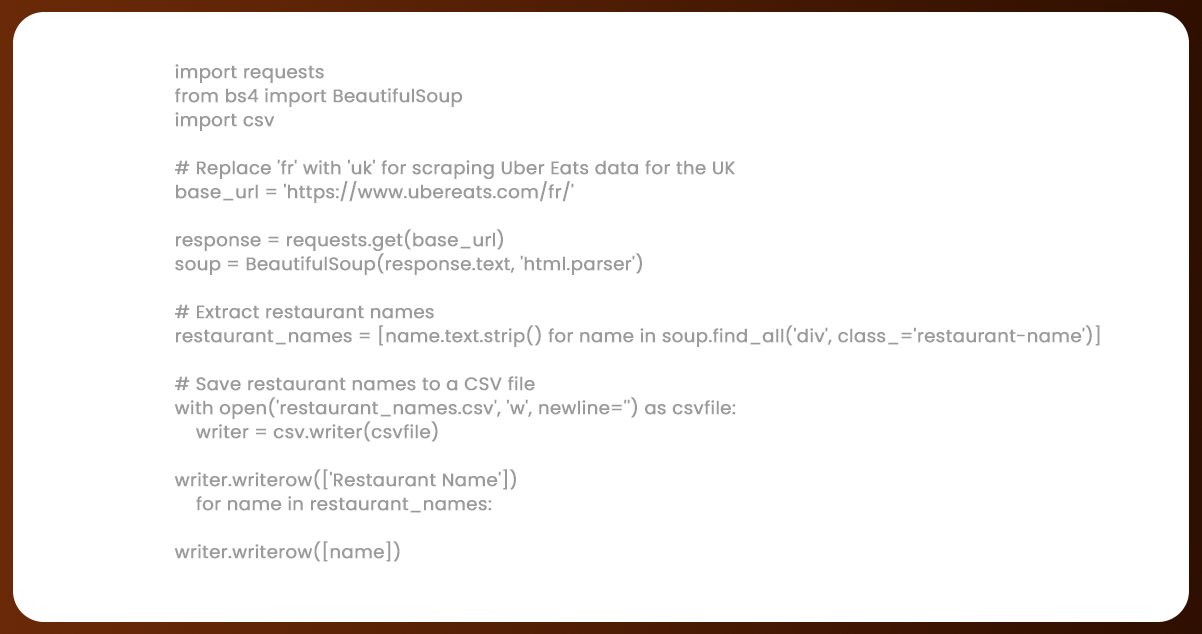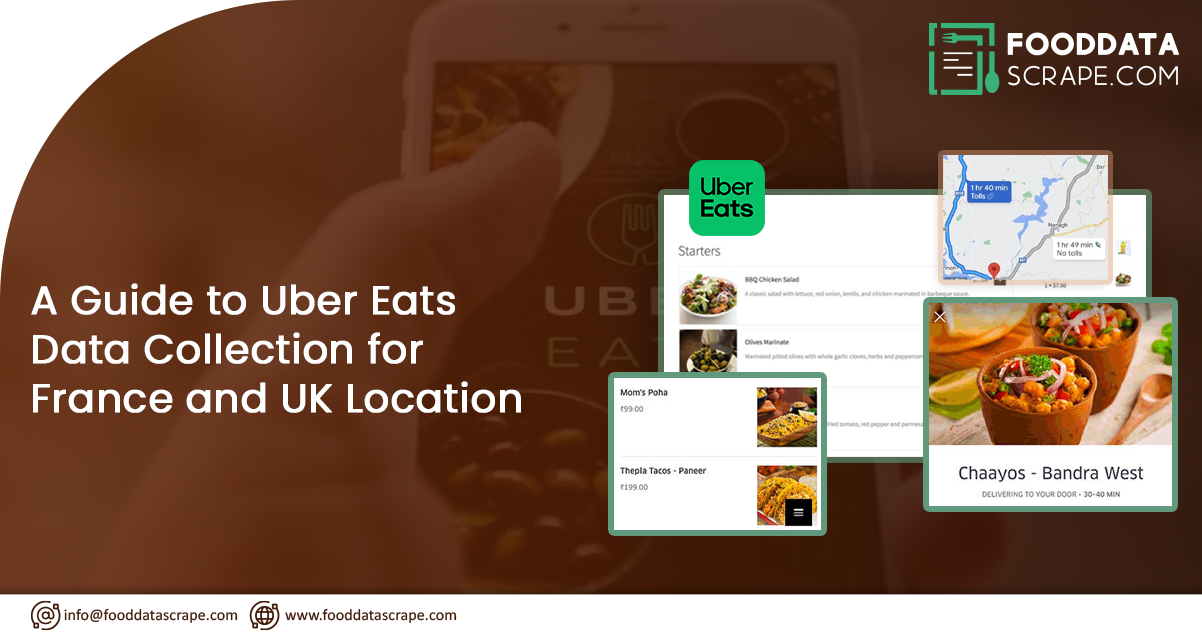In the dynamic realm of the food delivery industry, businesses are increasingly embracing data scraping to attain a competitive advantage and strategic insights. Uber Eats, a prominent global player, stands out, and scraping its data for the France and UK regions provides a valuable opportunity for businesses aiming to refine their operations. Through Uber Eats food delivery API, businesses can delve into market trends in the France and UK regions, unveiling insights into popular cuisines, emerging food preferences, and fluctuating demand patterns. This comprehensive analysis of Uber Eats Data Collection empowers businesses to align their offerings with current market demands, elevating their prospects for success in the fiercely competitive food delivery landscape. As data-driven decision-making becomes imperative, leveraging insights from Uber Eats Data Scraping in France and the UK positions businesses to navigate industry dynamics with agility, optimize their services, and cater effectively to customers' evolving needs in these critical regions.
List of Data Fields

- Restaurant Names
- Addresses
- Cuisine Types
- Ratings
- Reviews
- Operating Hours
- List of Menu Items
- Descriptions
- Prices
- Order Status
- Delivery Status
- Promotions
- Transaction Details
Why Scrape UberEats Data?

1. Understanding Market Trends: By scraping food delivery data, businesses can deeply understand market trends in the France and UK regions. It includes popular cuisines, emerging food preferences, and fluctuating demand patterns. Analyzing this data enables businesses to align their offerings with current market demands, enhancing their chances of success.
2. Competitive Analysis: Restaurant data scraping allows businesses to conduct thorough competitive analysis on Uber Eats in the France and UK markets. It involves extracting information on competitor pricing, delivery times, customer reviews, and promotional strategies. Businesses can strategically position themselves and differentiate services in response to market dynamics.
3. Menu Optimization: Uber Eats data scraping services provide valuable insights into the most popular menu items, customer reviews, and ratings. This information is instrumental in optimizing menus for restaurants and food establishments. Businesses can identify high-performing dishes, adjust pricing strategies, and enhance their menu to cater to local preferences.
4. Dynamic Pricing Strategies: Scraping Uber Eats data allows businesses to implement dynamic pricing strategies based on real-time market conditions. By monitoring pricing trends, promotions, and discounts competitors offer, businesses can adjust their pricing structures to remain competitive while maximizing profitability.
5. Enhancing Delivery Logistics: Efficient delivery logistics are crucial for success in the food delivery industry. Restaurant data scraper provides insights into delivery times, order fulfillment rates, and customer satisfaction. Businesses can use this information to optimize their delivery operations, ensuring timely and reliable service.
6. Customer Behavior Analysis: Understanding customer behavior is critical to building a successful food delivery business. Uber Eats data scraping enables businesses to analyze customer preferences, frequency, and peak ordering times. This information can inform targeted marketing campaigns and personalized promotions to attract and retain customers.
7. Strategic Expansion Planning: For businesses looking to expand their presence in the France and UK markets, scraping Uber Eats data offers essential insights. It includes identifying underserved areas, assessing competition density, and evaluating potential partnerships or collaborations with local restaurants.
Steps to Scrape UberEats Data for France and UK Region

Scraping Uber Eats data for the France and UK regions involves web scraping tools and libraries. Below are steps along with sample Python code using the BeautifulSoup library. Keep in mind that web scraping should be conducted responsibly and in compliance with the website's terms of service.
Steps:
Install Required Libraries:
Install the necessary libraries using pip:
pip install requests
pip install beautifulsoup4
Import Libraries
pip install requests
pip install beautifulsoup4
Set the Uber Eats URL for France or the UK:
# Replace 'fr' or 'uk' with the appropriate country code
base_url = 'https://www.ubereats.com/{country}/'
Send a Request to the Uber Eats Website:
response = requests.get(base_url)
Parse the HTML Content:
soup = BeautifulSoup(response.text, 'html.parser')
Identify HTML Elements for Scraping:
Use browser developer tools to inspect the HTML structure and identify relevant elements. Update the code accordingly.
Write Code to Extract Data:
# Example: Extracting restaurant names
restaurant_names = [name.text.strip() for name in soup.find_all('div', class_='restaurant-name')]
Handle Pagination (if applicable):
If the data is paginated, implement logic to navigate through pages and scrape data from each.
Store the Scraped Data:
Choose a storage format (e.g., CSV, JSON) and save the scraped data.

Handle Anti-Scraping Measures:
Add delays between requests and use user agent rotation to avoid detection.
Run the Code and Test:
Execute the script and test its functionality on a small scale.
Monitor and Update Code:
Periodically check for website changes and update the code accordingly.
Sample Code:

Conclusion: Scraping data from Uber Eats for the France and UK regions presents businesses with a powerful tool for gaining strategic insights and maintaining a competitive edge in the dynamic food delivery industry. By extracting real-time data on restaurant information, menu details, pricing, and customer reviews, businesses can make informed decisions to optimize their operations, refine marketing strategies, and align offerings with evolving market trends. However, it is crucial to approach data scraping responsibly, respect the terms of service, and stay vigilant to potential changes on the Uber Eats platform. By leveraging the benefits of data-driven decision-making, businesses can navigate the complexities of the food delivery landscape and enhance their overall success in these critical regions.
For profound insights, connect with Food Data Scrape. We specialize in Food Data Aggregator and Mobile Restaurant App Scraping, offering comprehensive data analytics and insights to enrich your decision-making and elevate your business strategies. Reach out today to unlock a pathway to success guided by data-driven intelligence.






























































































